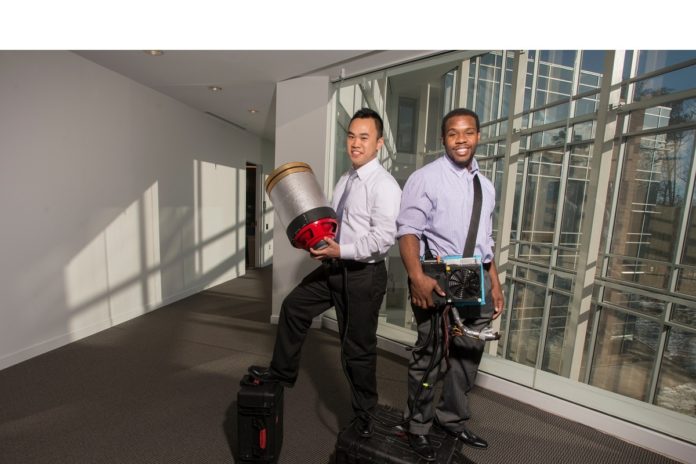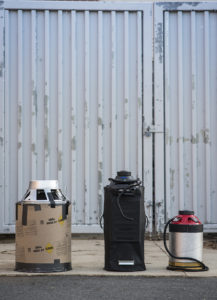
Researchers have been questioning the effects of sound on combustion since the mid 1800’s. An Irish scientist named John Tyndall wrote “I throw more power into my voice and now the flame is extinguished” after one of his experiments back in 1857. Unfortunately, except for a few twinges here and there the interest and associated research sort of dies off after Mr. Tyndall passes away and not much more is heard publicly until recently.
2004; Dmitriy Plaks and a few friends at the University of West Georgia tested whether sound waves can douse fires in hopes of using sound to extinguish flames in a spacecraft. Their experiment was simple. Place a lit candle into a topless chamber with three speakers pointed into the chamber. Once this was set up, they played a popular rock song through the speakers and once a very low bass tone was reached in the song, the flame instantly went out. The initial thoughts were that high frequency sound would eliminate the flame but, later experiments showed that the most effective frequency range was between 40 and 50 hertz (a nice, healthy bass line).
 March 2015; George Mason University students Viet Tran and Seth Robertson pick up the idea of fighting fire with sound as a graded final project. Knowing full well that others (DARPA and West Georgia) were now actively studying and working on the almost forgotten concepts, the two engineering students put their heads and their own personal money (about $600) into actually creating a portable prototype fire suppressor. The VIDEO of their initial presentation shows the unit being used to extinguish flames from an alcohol fire. Granted, it has only been with alcohol and there are grand hurdles to overcome before any practical use can be even thought about. It’s definitely a high enough success for the men to be granted a “provisional patent”. This gives them a year to talk publicly about the invention, to test the market and to determine whether pursuing the patent makes sense.
March 2015; George Mason University students Viet Tran and Seth Robertson pick up the idea of fighting fire with sound as a graded final project. Knowing full well that others (DARPA and West Georgia) were now actively studying and working on the almost forgotten concepts, the two engineering students put their heads and their own personal money (about $600) into actually creating a portable prototype fire suppressor. The VIDEO of their initial presentation shows the unit being used to extinguish flames from an alcohol fire. Granted, it has only been with alcohol and there are grand hurdles to overcome before any practical use can be even thought about. It’s definitely a high enough success for the men to be granted a “provisional patent”. This gives them a year to talk publicly about the invention, to test the market and to determine whether pursuing the patent makes sense.
Ideas? Theories? Hurdles? They are everywhere since March. How does it work? Why the sudden interest? What problems could there be if it’s been proven to work? Initial thoughts go to use in spacecraft. Using sound instead of chemicals for a fire would be fantastic. The issues there are 1) you need electricity to generate sound and 2) you need a clear line of sight to the flame. Another thought is to mount the system to a drone that would accompany firefighters and act as a protective zone around them. The one BIG issue is that sound waves reflect or “bounce” unless they are directed out into open space. When waves bounce inside of a room, they don’t just bounce, they combine with the incoming waves and they change; sometimes for good, sometimes not. It’s called either constructive or destructive interference With the optimum frequency range being between 40 and 50 Hz can this system be made reliable enough to allow someone’s life to be dependent upon it? Time will tell.
You want to support Anonymous Independent & Investigative News? Please, follow us on Twitter: Follow @AnonymousNewsHQ
Bibliography
brauer, molly. (2015). Pump Up the Bass To Douse a Blaze: Mason Students’ Invention Fights Fires
lachot, wes. (n.d.). Bass Waves in the Control Room
Snyder, A. (2008). When Fire Strikes, Stop, Drop and… Sing? Scientific American
Whitesides Research Group: Research > Flames. (n.d.)
(Snyder, 2008), (brauer, 2015), (‘Whitesides Research Group: Research > Flames’, n.d.), (lachot, n.d.)





Video demonstration: https://www.youtube.com/watch?v=hkUv5gCA-1w
Thx Brenton !!!